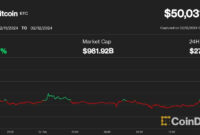What is Avalanche (AVAX) ? – CryptoKiNews
What Is Avalanche (AVAX)?
Avalanche is an umbrella platform for launching decentralized finance (DeFi) applications, financial assets, trading and other services.
It aims to be something of a global assets exchange, allowing anyone to launch or trade any form of asset and control it in a decentralized manner using smart contracts and other cutting-edge technologies.
Developers at Ava Labs claim that Avalanche is the first smart contracts network to offer transaction finalization in under one second as standard.
Avalanche launched its mainnet in September 2020. The platform’s native token, AVAX, performs various tasks within Avalanche and also functions as a rewards and payment system for users.
AVAX, the native token to smart contracts platform Avalanche, hit an all-time high on Sunday, briefly making it one of the top 10 cryptocurrencies by market value. Now ranked No. 11, AVAX is up 33% in the last seven days, according to CoinGecko, and up over 3,000% in the last year.
This surge followed an announcement by Ava Labs, a team supporting development of the Avalanche blockchain, stating it formed a partnership with consulting firm Deloitte to “improve security, speed and accuracy” of Federal Emergency Management Agency (FEMA) funding. Deloitte will use the Avalanche blockchain to “build more efficient disaster-relief platforms.”
When was Avalanche launched?
How does Avalanche work?
To solve the problems outlined, Avalanche uses a combination of methods that make it somewhat unique. To begin, Avalanche is actually made up of three interoperable blockchains: the X-Chain, C-Chain, and P-Chain.
With each blockchain taking on different roles, Avalanche improves speed and scalability compared to running all processes on just one chain. The developers have combined this aspect with two different consensus mechanisms tailored to the needs of each blockchain. Tying all of these blockchains together is Avalanche’s native utility token AVAX. Users need the token to stake and pay network fees, giving the ecosystem a common usable asset between different Avalanche subnets.
Avalanche may challenge Ethereum’s dominance
Avalanche calls itself the “fastest smart contracts platform in the blockchain industry.” Smart contracts are a blockchain-based technology that allows buyers and sellers to automatically input the terms of an agreement into self-executing contracts. Ethereum was crypto’s first smart contracts platform. Its coin is currently the world’s second-most valuable token behind Bitcoin with a valuation of nearly $500 billion. But Avalanche’s recent rise has some investors convinced that competitors are staging more formidable challenges to Ethereum’s dominance.
Where and How to Buy AVAX
Conclusion
I hope you have gained all of the important information about AVAX including its features and highlights throughout this topic.If you have any questions about AVAX or want to know more about AVAX, please feel free to leave a comment below.


